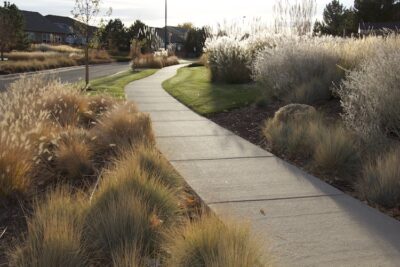Lake Mead’s receding waters have exposed sunken boats, dead bodies, and more. But the wisdom of a bet placed in 2005 by Las Vegas has also been revealed.
The Southern Nevada Water Authority draws 90 percent of its water for a population of 2.3 million from Lake Mead. It had two intake pipes, one higher and one lower in the reservoir. Reservoir levels have dropped precipitously since 2002 when the Colorado River delivered just 3.8 million acre-feet of flows. The 1922 compact among Colorado and the seven other basin states assumes more than 20 million acre-feet in annual flows.
Las Vegas bored a third tunnel, this one coming up from the bottom of the reservoir. The far-sightedness of that and other investments totaling $1.3 billion was revealed in April when reservoir levels dipped below what was needed for the highest intake pipe. Depending upon the Colorado River, Las Vegas had wisely hedged its bet.
Drought combined with the aridification produced by warming temperatures have upset the cart in the Colorado River Basin. Apples are rolling everywhere. The easy, visual way of telling that story is of the widening bathtub rings in the giant reservoirs of the Colorado River. Mead and Powell are respectively 73 percent and 74 percent empty.
But the most important story will be in how demand gets cut in Colorado and the six other basin states. The onus is on California, Arizona, and Nevada The lower basin years have slurped too generously from the river given the emerging climate realities.
Colorado and other upper basin states have lived within their compact-apportioned means. But here, too, changes are underway, because the water just is not there. Farms and ranches, which still consume upwards of 85 percent of water in Colorado, will have to be part of the story. So will the still-growing towns and cities.

Lower-water landscaping in Commerce City. Photo by Allen Best.
Changes can be seen most prominently in those places on the edge, including Denver’s fast-growing suburbs of Aurora and Castle Rock. They’re redefining acceptable landscapes in the semi-arid West. Sprawling lawns resembling those of the rain-soaked eastern states are on their way out.
In Aurora, Colorado’s third largest city at nearly 400,000 residents, the city council last week approved regulations sharply limiting turf grasses on golf courses and new homes. Residential lots will be limited to 45 percent or 500 square feet of the yard, whichever is less, for grass. Within that limit are other limits. No more Kentucky bluegrass. Other varieties use less water.
Elected officials in Castle Rock, a city of 80,000 people that expects to fully fill out its britches at 142,000 people, in early September will review similar regulations. “Coloradoscape” is what Castle Rock calls its recommended landscapes. For homes, 500 square feet is tiny, smaller than some bedrooms. For new yards, it will be the max. Mark Marlowe, director of Castle Rock Water, says city leaders began meeting with stakeholders, including homebuilders, in November. The city does not use Colorado River water, but it has had a parallel problem, drafting unsustainably on groundwater.
Denver has a goal of a 30 percent reduction in “non-functional turf.” It will start with medians and non-residential areas. “Purely ornamental grass should be replaced with trees and plants that can cool, shade, pollinate, manage rainwater and survive extended dry periods,” explains Denver Water’s Todd Hartman.
Most surprising may be the actions by the water provider for Vail and Beaver Creek and associated areas. Even here, at the headwaters of the Colorado River, in a state that produces more than half of the river’s annual flows, the Eagle River Water and Sanitation District has been clamping down on outdoor water use.

Xeriscaping in front of the Steamboat Springs city offices. Photo by Allen Best.
Aesthetics still matter. Saving water should not mean having a front yard that looks like a gravel pit along the South Platte River. The draft revised Colorado Water Plan emphasizes the role of landscaping contractors in creating new useful and pleasing yards with minimal water use.
Take away three key messages from this, though. If all of Colorado’s towns and cities ceased use of Colorado River water, Mead and its upper-basin sibling, Powell, will not fill up. The lower-basin states have a reckoning.
Also to be remembered is that if this drought ends, there will still be a warmer and almost certainly drier climate. A 2017 study found that only 50 percent of the reduced precipitation can be attributed to drought. Even in a very good snow year in Steamboat Springs, for example, the Yampa River can still have meager flows by August.
One final thing. Las Vegas, in addition to sinking a third tunnel into Mead, has also been wringing its towel through its own demand-side management programs. The Bellagio’s fountains will remain, but those bloated backyard swimming pools — goodbye to that illusion of plenty.
by Allen Best
Best publishes Big Pivots, which covers the energy and water transitions in Colorado and beyond. He can be found at BigPivots.com
Featured image: A marina at Lake Mead, near Las Vegas, in December 2021.








This is an excellent story: easy to understand, and with a mix of hopeful news to balance the dire large-scale threats from climate change and growth in downstream communities. It is also mercifully short. Great work.